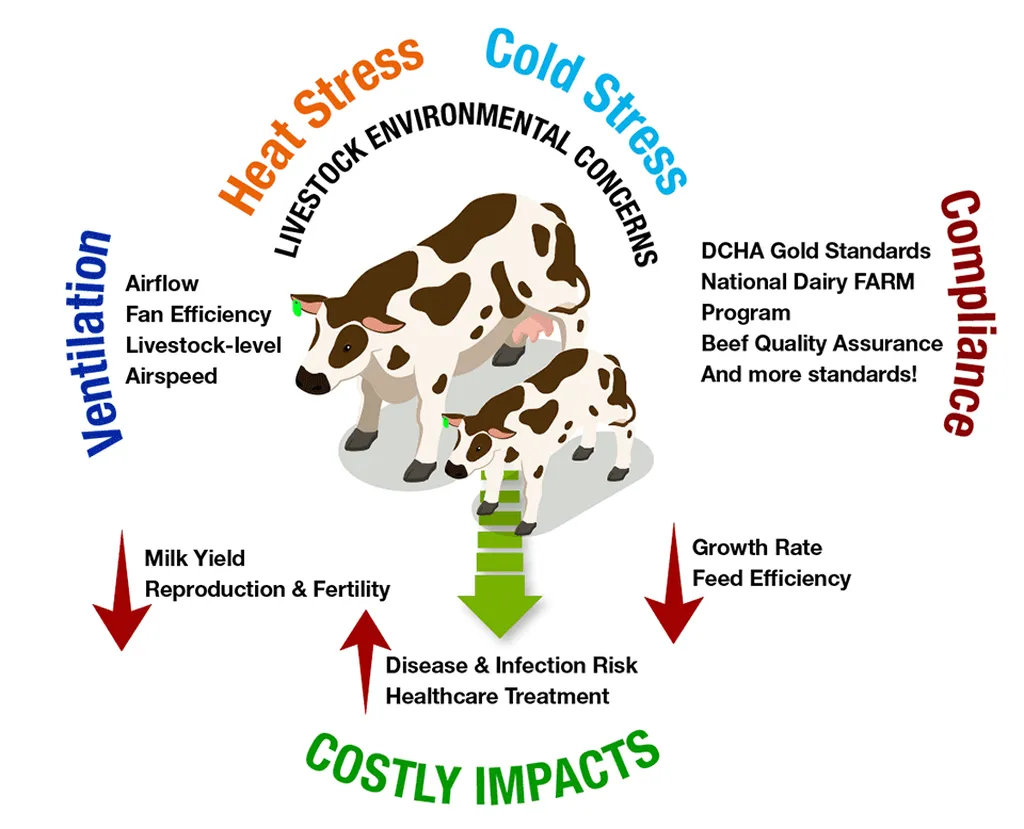In the heart of Ukraine, researchers are unraveling the intricate dance between heat stress and milk quality, a discovery that could reshape the dairy industry’s approach to climate challenges. O. Danchuk, from the Institute of Climate-Smart Agriculture of the National Academy of Agrarian Sciences of Ukraine, has led a study that sheds light on how chronic heat stress affects the milk productivity and quality of dairy cows. The findings, published in ‘Harčova Nauka ì Tehnologìâ’ (which translates to ‘Food Science and Technology’), offer a compelling narrative for dairy processors and farmers alike.
The study reveals that as the temperature and humidity index (THI) climbs from moderate to severe, milk yield drops significantly. “For each day of severe heat stress, the total yield on the herd decreased by an additional 24.28 kg of milk,” Danchuk explains. This translates to a daily loss of 0.124 kg per cow, a figure that could strike a chord with dairy farmers grappling with rising temperatures.
But the impact of heat stress doesn’t stop at quantity. The quality of milk is also at stake. Raw milk from heat-stressed cows may contain less fat and protein, with a slight increase in density. The fatty acid composition, a critical factor in milk’s nutritional value, shows a remarkable sensitivity to heat stress. “The fatty acid composition of milk shows a relatively high sensitivity to the intensity of the heat load on the body of a lactating cow,” Danchuk notes. Short-chain fatty acids (C4:0-C6:0) decrease, while saturated fatty acids C12:0 and C18:0, along with the polyunsaturated fatty acid C18:2n6c, increase.
These findings could have significant implications for the dairy industry. Dairy processing enterprises can use THI indicators to predict raw milk supply and its nutritional value, allowing for better planning and resource allocation. Moreover, understanding the impact of heat stress on milk quality can help farmers implement strategies to mitigate its effects, such as improving ventilation in barns or adjusting feeding practices.
The study also offers a glimmer of hope. It suggests that the level of milk supply can be restored 7-10 days after the disappearance of symptoms of chronic severe heat stress. This could guide farmers in managing their expectations and planning their operations during periods of heat stress.
As climate change continues to push temperatures higher, this research becomes increasingly relevant. It not only highlights the challenges that the dairy industry may face but also provides a roadmap for navigating them. By understanding the impact of heat stress on milk quality and yield, the industry can better prepare for the future, ensuring a steady supply of high-quality milk despite the changing climate.
In the words of Danchuk, “This research is a stepping stone towards climate-smart dairy farming. It’s about understanding the challenges and finding ways to overcome them.” And in the face of climate change, that understanding is more valuable than ever.

